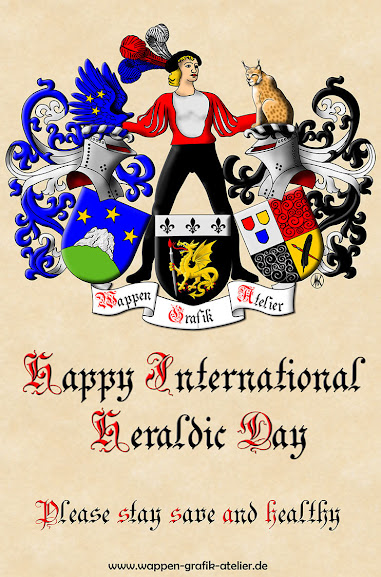Alas, all good things must come to an end, and so it is that with this post, we come the last of the stained glass windows in the Chapter House in York Minster.
In the rose window at the top, instead of the arms of England that we have come to see in this position in so many other of the windows in the Chapter House, here we find the arms of France ancient, Azure semy-de-lys or. Immediately below the arms of France, we see the arms of Tatteshale, Checky gules and or a chief ermine, for Robert de Tatteshale or Tattershall, Lord of Buckenham.
In the rose window on the left, we have another example of France ancient. And immediately below those arms, we see the arms of FitzAlan, Barry or and gules.
In the rose window on the right, we find another shield of France ancient. Below that shield we have the arms of Percy ancient, Azure five fusils conjoined in fess or. (The Percy arms are also somtimes blazoned as Azure a fess fusilly or, or even as Azure a fess indented or.)
There is no coat of arms in the small rose window on the left.
But in the small rose window on the right, we find the arms of Blanchminster or Oswaldston, co. Salop, one of the lordships of Fitz-Alan of Clun, Argent fretty gules, or sometimes Argent a fret gules.
And thus we come to the circumambulation (how often do you get to use that word in a conversation?) of the Chapter House in York Minster, and our review of the heraldry contained in the windows there.
I hope that you have enjoyed this part of our visit to see the heraldry in York Minster. But stay tuned! There is more to come.















%20by%20Danilo%20Carlos%20Martins.jpg)




